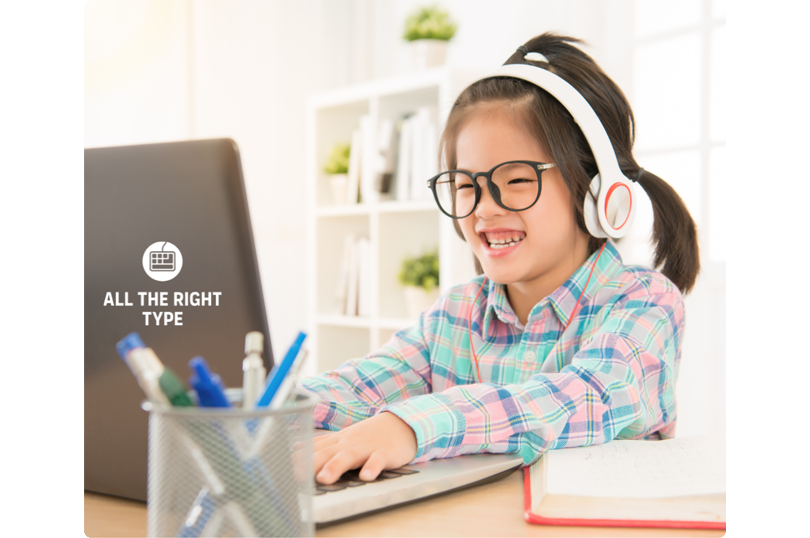How Early Should You Start Typing Lessons in Your Homeschool?
 When deciding how early to start typing lessons in your homeschool, consider your child's age, skill level, and ability to follow instructions. Generally, children can begin learning basic typing skills around 6-8 years old, depending on their developmental readiness. Another thing to consider is hand size, young learners may do better with a laptop that has a smaller keyboard versus a full size independent keyboard.
When deciding how early to start typing lessons in your homeschool, consider your child's age, skill level, and ability to follow instructions. Generally, children can begin learning basic typing skills around 6-8 years old, depending on their developmental readiness. Another thing to consider is hand size, young learners may do better with a laptop that has a smaller keyboard versus a full size independent keyboard.
Benefits of Early Typing Lessons:
- Improves digital fluency and accuracy
- Enhances English language skills through real-word typing exercises
- Develops healthy typing habits and prevents injuries
- Boosts productivity and efficiency
|
|
When Should Children Start Learning to Type?
Ages 6-7 (Grades 1-2): Early Exposure
- Ideal time to introduce the keyboard layout and begin basic finger placement.
- Keep sessions short (5-10 minutes) and fun, using games and visual tools.
- Focus on home row familiarity and typing simple words.
Ages 8-10 (Grades 3-5): Skill Building
- Kids at this age are ready for formal typing instruction.
- They can learn proper finger technique, build accuracy, and gradually increase speed.
- Great time to introduce typing lessons and practice modules with feedback.
Ages 11+ (Middle School and Beyond): Speed and Fluency
- At this stage, students should focus on typing fluency, speed, and accuracy.
- Typing becomes a daily tool for schoolwork, emails, and research.
- Practice typing tests and timed drills to build real-world readiness.
- Provide positive reinforcement and encouragement to boost your child's confidence and motivation
Signs Your Child May Be Ready to Learn Typing:
| Basic reading and writing skills. | |
| Can recognize letters, numbers, and punctuation. | |
| Developed fine motor skills to have enough finger strength and coordination to press keys accurately. | |
| Some familiarity with the keyboard, even just for games or research. | |
| They can sit and focus for short periods (10-15 minutes at first). | |
| They show curiosity about typing, computers, or creating things digitally. |
Choosing the Right Typing Program:
When choosing a typing program for your child, it's important to find one that supports their individual learning style and keeps them engaged. Look for programs that use adaptive technology, such as All The Right Type, which allows students to progress at their own pace based on their performance and comfort level. This helps reduce frustration and encourages steady improvement. Programs that feature engaging content and interactive games can also make a big difference in maintaining your child's motivation and turning typing practice into a fun experience rather than a chore. Additionally, consider tools that offer customizable lessons and progress tracking features, so you can tailor the experience to your child's unique needs and monitor their development over time. These features not only support learning but also help build confidence as your child sees their own improvement.
|
All The Right Type Features:
Our Homeschool Version of All The Right Type offers simplified features for managing smaller groups or class sizes, with 1 admin account and up to 5 users.
|
Getting Started:
- Begin with basic typing exercises, focusing on proper hand positioning and posture
- Incorporate typing into everyday activities, such as writing school assignments or creating stories
- Young learners do well when the focus on typing for just 15-20 minutes a day
- Provide positive reinforcement and encouragement to boost your child's confidence and motivation
When you master typing, your fingers move effortlessly across the keyboard, freeing your mind to focus on creative expression, allowing your ideas to flow without interruption. With your fingers no longer constrained by searching for keys, your imagination can soar, and your writing, coding, or artistic endeavors can truly flourish.
By introducing typing lessons early, you can set your child up for success in the digital age.

